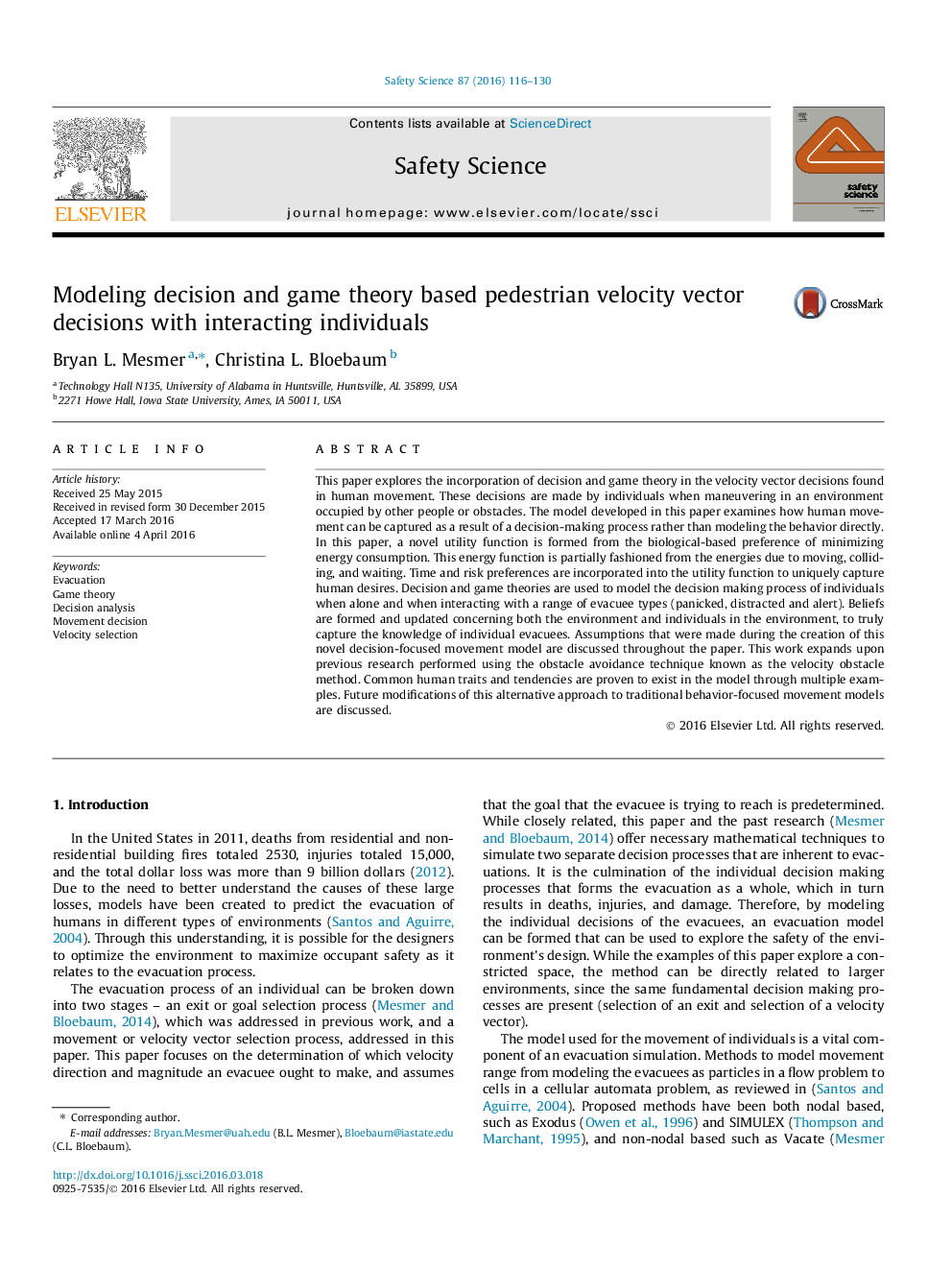| کد مقاله | کد نشریه | سال انتشار | مقاله انگلیسی | نسخه تمام متن |
|---|---|---|---|---|
| 588947 | 1453384 | 2016 | 15 صفحه PDF | دانلود رایگان |
• Biological-based preference of minimizing energy consumption proposed for movement decisions.
• Decision and game theories incorporated into model.
• Time and risk preferences captured in utility function.
• Beliefs on opponents are formed and updated mathematically.
This paper explores the incorporation of decision and game theory in the velocity vector decisions found in human movement. These decisions are made by individuals when maneuvering in an environment occupied by other people or obstacles. The model developed in this paper examines how human movement can be captured as a result of a decision-making process rather than modeling the behavior directly. In this paper, a novel utility function is formed from the biological-based preference of minimizing energy consumption. This energy function is partially fashioned from the energies due to moving, colliding, and waiting. Time and risk preferences are incorporated into the utility function to uniquely capture human desires. Decision and game theories are used to model the decision making process of individuals when alone and when interacting with a range of evacuee types (panicked, distracted and alert). Beliefs are formed and updated concerning both the environment and individuals in the environment, to truly capture the knowledge of individual evacuees. Assumptions that were made during the creation of this novel decision-focused movement model are discussed throughout the paper. This work expands upon previous research performed using the obstacle avoidance technique known as the velocity obstacle method. Common human traits and tendencies are proven to exist in the model through multiple examples. Future modifications of this alternative approach to traditional behavior-focused movement models are discussed.
Journal: Safety Science - Volume 87, August 2016, Pages 116–130
